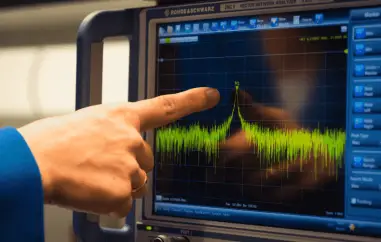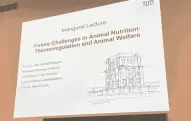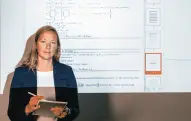Breakthrough Discovery Unlocks Potential for Highly Sensitive Sensors
 The world of electronic devices is on the brink of a revolution in sensor technology as scientists at the Technical University of Munich (TUM) announce a groundbreaking theoretical extension of parametric amplification. This discovery opens the door to unprecedented sensitivity in sensors, promising enhanced accuracy in location detection for mobile devices and a potential quantum leap in quantum computing.
The world of electronic devices is on the brink of a revolution in sensor technology as scientists at the Technical University of Munich (TUM) announce a groundbreaking theoretical extension of parametric amplification. This discovery opens the door to unprecedented sensitivity in sensors, promising enhanced accuracy in location detection for mobile devices and a potential quantum leap in quantum computing.
In today's electronic landscape, sensors frequently operate with high-frequency signals, demanding maximum precision in measurements. To achieve this level of accuracy, the parametric amplification effect has long been harnessed. Researchers at TUM are now pioneering efforts to leverage this effect to expand the functionality of sensors, with potential applications spanning from improved location positioning in smartphones to advancements in quantum computing.
Parametric amplification, which is prevalent in numerous electronic devices, can be likened to a child on a swing who rhythmically bends and straightens their knees to increase its height and movement along a defined path. In the realm of physics and applied mathematics, this phenomenon is termed parametric amplification. It is notably utilized to heighten sensitivity in various devices, ultimately improving measurement accuracy. This technique is commonplace in micro- and nanostructured components found in navigation systems, smartphones, and other mobile devices, including self-driving cars.
The research team at TUM is now pushing the boundaries of this technology, armed with a recent study that calculates how these limits can be transcended. Historically, parametric amplification has been confined to a narrow frequency range, akin to the fixed frequency of a swinging child's oscillation. Eva Weig, the Head of the Chair of Nano and Quantum Sensors at TUM, explains, "Until now, parametric amplification has been limited to a very narrow frequency range of the electrical, optical, or mechanical vibrations, also known as oscillations. The same way as the swing always goes back and forth at a fixed frequency. It cannot go faster."
Collaborating with researchers at TU Darmstadt, the team deployed a theoretical model calculation to explore the implications of expanding this frequency range. According to their calculations, this expansion could lead to a significant enhancement in sensor sensitivity. The researchers focused on asynchronous parametric amplification, a phenomenon akin to two connected playground swings not pushed simultaneously. This effect, referred to as broadband amplification, allows for flexible frequency targeting, effectively broadening the functional range of the technology.
One practical application of this breakthrough is in the microgyroscope, a rotational speed sensor present not only in smartphones but also in satellites. By improving parametric amplification, researchers could achieve more precise determinations of satellite positions and paths. Furthermore, the implications extend into the realm of quantum computing, where parametric amplification could play a pivotal role in signal conversion.
The study is underpinned by the doctoral thesis of Dr. Ahmed Barakat, who conducted his initial research on the topic at TU Darmstadt before contributing to the project at TUM. Dr. Barakat's work has garnered recognition in the form of the Ali H. Nayfeh Best Paper Award for his publication. This prestigious award acknowledges the top three publications presented at the International Nonlinear Dynamics Conference (NODYCON). The future of sensor technology and quantum computing appears brighter than ever, thanks to the theoretical extension of parametric amplification pioneered by the researchers at TUM.
Publication Information:
Title: Non-trivial solutions and their stability in a two-degree-of-freedom Mathieu-Duffing system
Authors: Ahmed A. Barakat, Eva M. Weig, Philipp Hagedorn
Published: Nonlinear Dynamics, 2023
DOI: 10.1007/s11071-023-08659-5
Additional Information: The study is based on the doctoral thesis of Ahmed Barakat, which he wrote at TU Darmstadt, and his further research on the topic at TUM. Ahmed Barakat has also received the Ali H. Nayfeh Best Paper Award for his publication. The award recognizes the best three publications presented at the International Nonlinear Dynamics Conference (NODYCON).
Research in the field of Nano and Quantum sensors at TUM Photo: Magdalena Jooss / TUM










































